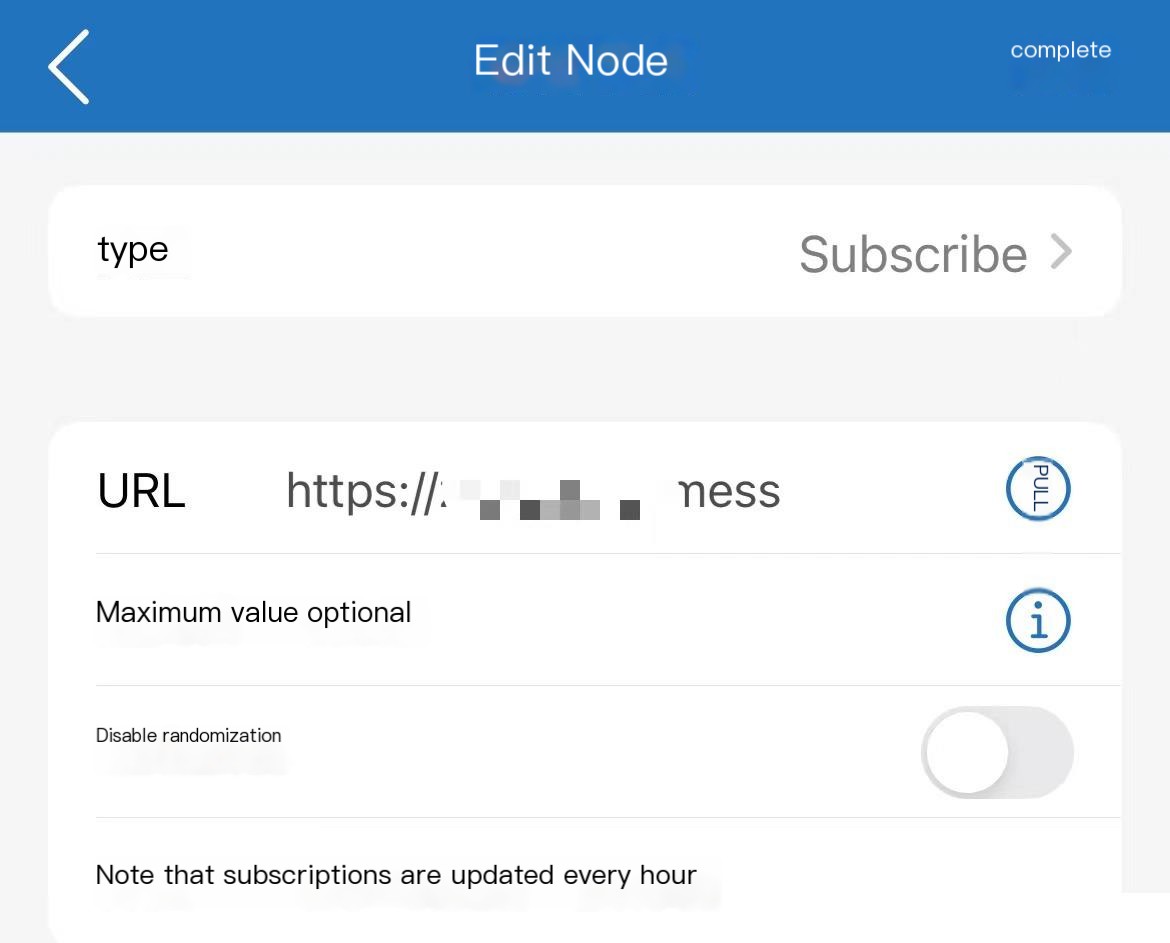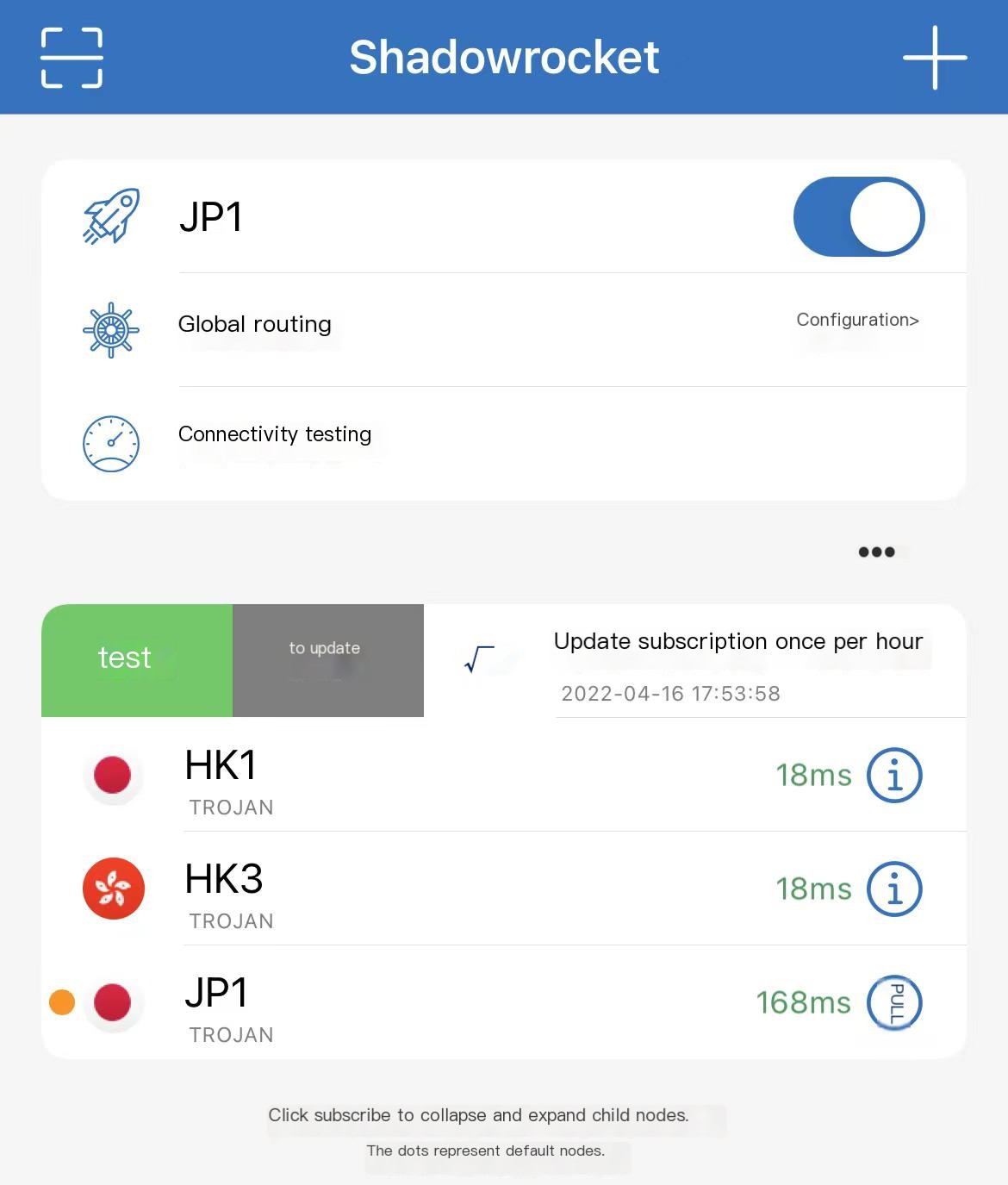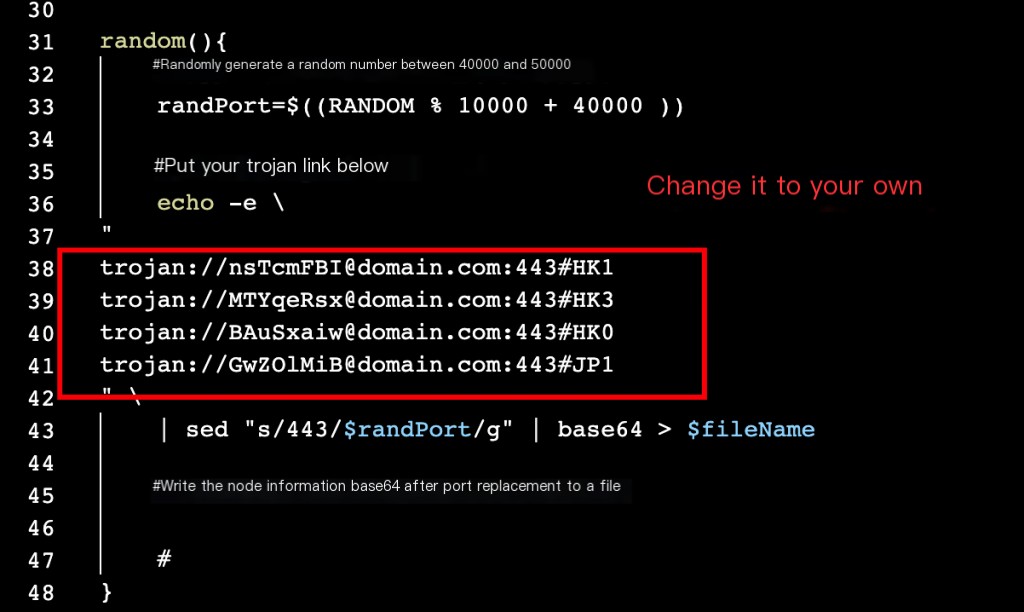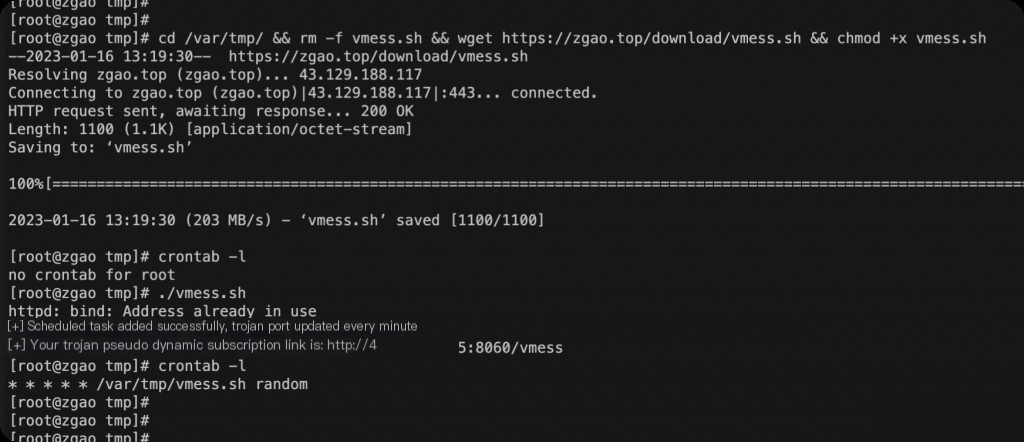Recently, the 443 port of trojan is always blocked. I checked many articles online, and there are many ideas provided.
Here are a few summarized points:
- Disguise as a normal website and allow search engine crawlers to capture it.
- Nginx traffic splitting.
- Use CDN.
- Change the port.
Experimental Environment
- centos 7
- Using the one-click trojan setup script from https://github.com/Jrohy/trojan
Using iptables NAT Port Forwarding
From my current usage, trojan mostly gets its port blocked, the IP doesn’t seem to be a big problem. I’m too lazy to try the methods above, so I directly solve the problem with one iptables command.
# Forward traffic from ports 40000~50000 to port 443 iptables -t nat -A PREROUTING -p tcp --dport 40000:50000 -j REDIRECT --to-ports 443
Using NAT to forward traffic, it won’t listen to the port on the local machine, so you can’t see it with netstat.
After executing, the client can communicate with trojan using any port from 40000 to 50000.
Note: Many VPSs require port release in the console
Implementing “Pseudo-Dynamic Port” with Client Subscription Update
Write a
#!/bin/bash # The generated subscription file is placed in the root directory of the website filePath='~/www/vmess' # Randomly generate a number between 40000 and 50000 randPort=$((RANDOM % 10000 + 40000 )) # Below is my trojan node information echo -e \ " trojan://[email protected]:443#HK1 trojan://[email protected]:443#HK3 trojan://[email protected]:443#HK0 trojan://[email protected]:443#JP1 " \ | sed "s/443/$randPort/g" | base64 > $filePath # Write the node information with the changed port into the file after base64 encoding
This is a very simple shell script that replaces the original node information with a random number and then encodes it into a format acceptable to the client subscription using base64, and finally places this subscription in the website directory.
Crontab Scheduled Task to Update Subscription Node Information
Place the above script in the /usr/bin/ directory and add executable permissions.
[root@VM-4-13-centos ~]# chmod +x /usr/bin/vmess.sh [root@VM-4-13-centos ~]# crontab -l 1 * * * * /usr/bin/vmess.sh
Client Subscription Addition
Here we take Shadowrocket as an example, others are similar.


OK, every time you refresh the subscription, it is a different port. The simplest way to achieve dynamic ports!
January 16, 2023 Supplement: One-Click Script for Automatic Subscription Update
Recently, many people added me as a friend and asked about configuration issues. So I wrote a one-click script to facilitate deployment for everyone.
cd /var/tmp/ && rm -f vmess.sh && wget https://zgao.top/download/vmess.sh && chmod +x vmess.sh
Then edit vmess.sh

Then execute
./vmess.sh

That’s it!


